Non-native invasive species are constantly creeping through northern Minnesota and the surrounding region. Tansy, thistles, and spotted knapweed proliferate, as do many other plant species, expanding their populations wherever they show up, always quietly gaining footholds in new locations.
Scientists, citizens, land managers, and others track many sightings of non-native species in a joint database called EDDMapS. The near real-time sharing of observations can help prevent the spread and manage infestations.
Thousands of specimens of exotic plants and animals have been documented on EDDMapS in the Superior National Forest of northeastern Minnesota.
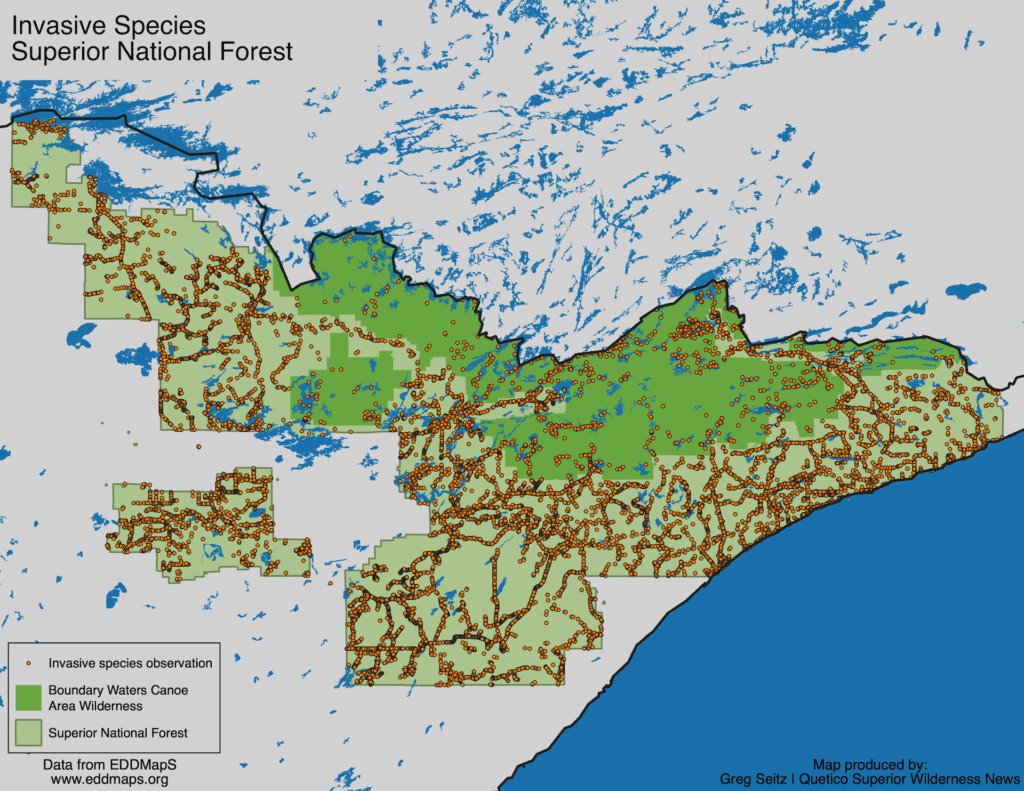
These plants and animals are usually transported by people, and they can seriously disrupt natural ecosystems. While wildlife has always moved and adapted as environmental conditions change, the rate and extent of the spread of these exotic species is unprecedented.
Many of the species are also aggressive colonizers, and can quickly convert habitat full of different plants and animals into a monoculture of the new organism. A small introduction can easily turn into a major infestation as the non-native species can often quickly reproduce without predators or other limitations present in its native range.
Efforts are underway at all levels of management and stewardship to fight invasive species. It is often intensive, costly work. Visitors should follow precautions to help prevent spreading exotic plants and animals. See these links for guidance about Aquatic and Terrestrial species in Minnesota.
Most prolific problems
Below are the 10 most commonly observed species on the 3 million-acre National Forest. The entire region is affected by invasive species, but limiting the list to the Superior provided a fairly straightforward analysis of lands under one agency.
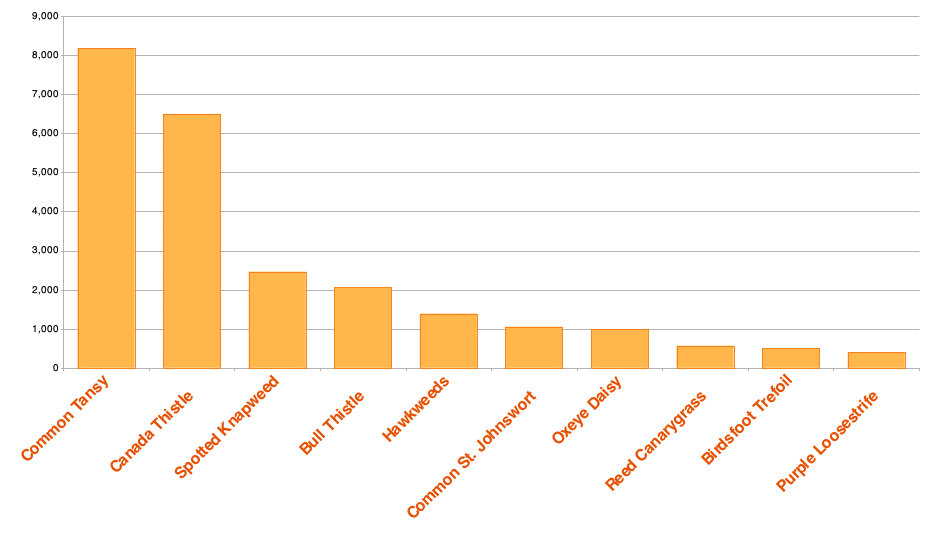
1. Common Tansy
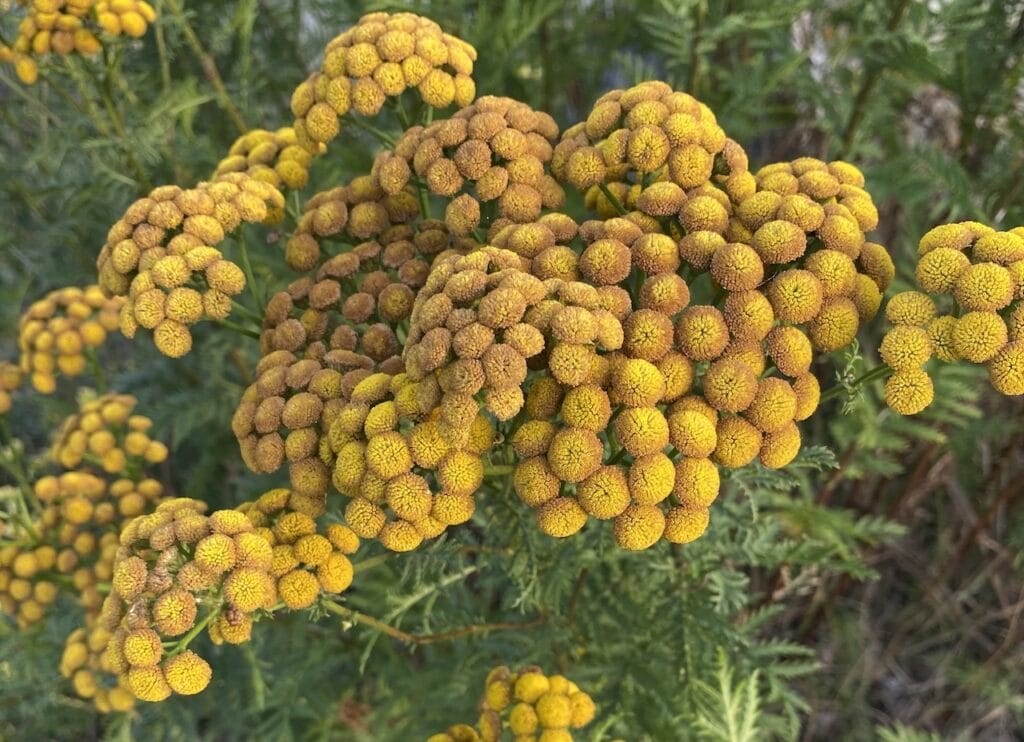
The common tansy is a perennial weed. It grows well in fertile, well-drained soils, and under full sunlight.
The common tansy is poisonous to livestock and humans. However, poisoning cases are rare since the weed is unpalatable to livestock. The weed forms large, dense stocks that can compete with native species or crops. (Source: EDDMapS)
2. Canada Thistle
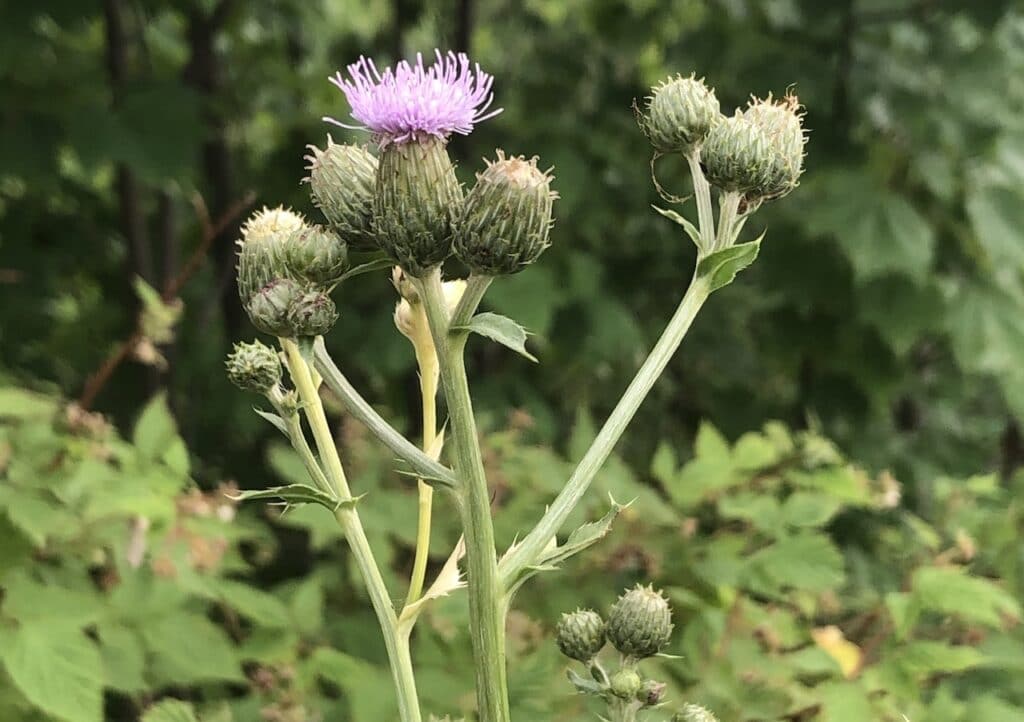
This is a perennial weed. Seed germination occurs from late May through to the fall months. This species will thrive in various soil types, which is why it is a problem with many agricultural producers. Sun-lit areas where the land has been worked over, is an ideal spot for the Canada thistle.
The Canada thistle has an extensive root system which causes competition below ground with various crops, and the aggressive growth of shoots causes competition above ground. The Canada thistle will tend to reduce crop yields and productivity. (Source: EDDMapS)
3. Spotted Knapweed
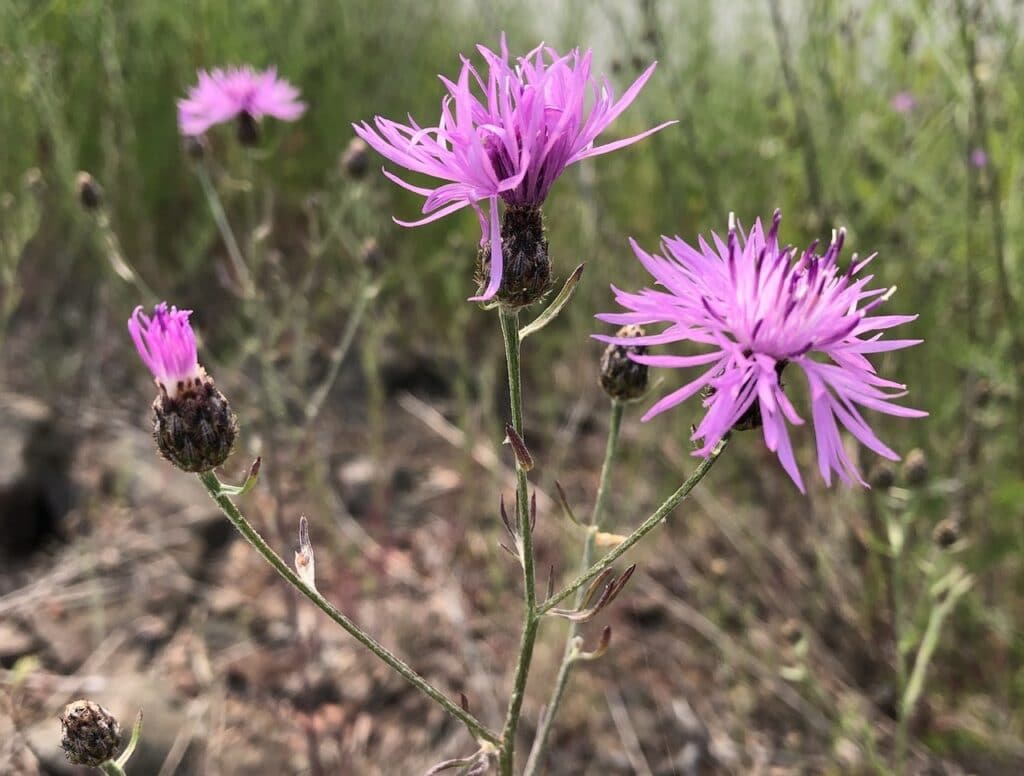
Centaurea stoebe ssp. micranthos is an herbaceous biennial or perennial plant that readily invades open areas. Reproduction of spotted knapweed occurs solely by seed. Hundreds and/or thousands of seeds are produced. Seeds are easily distributed by wind, animals, and contaminated hay. Seeds can remain viable in the soil for up to 8 years.
Spotted knapweed invades a wide variety of habitats including pastures, open forests, prairies, meadows, old fields, and disturbed areas. It displaces native vegetation and reduces the forage potential for wildlife and livestock. (Source: EDDMapS)
4. Bull Thistle
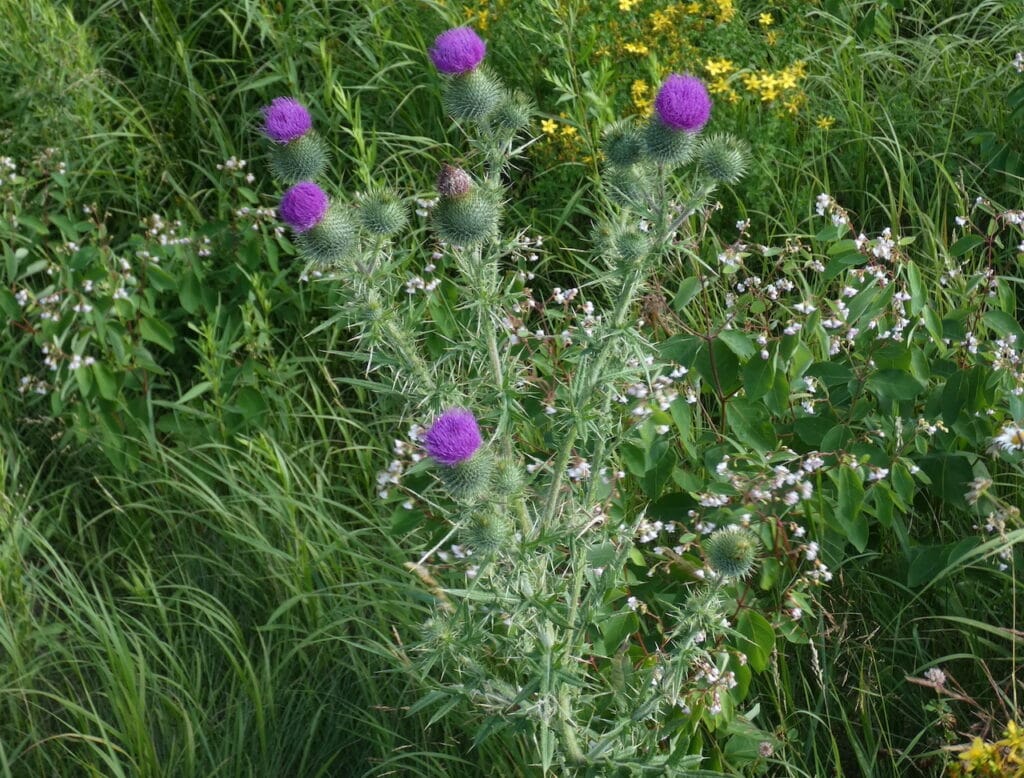
Cirsium vulgare is an annual or biennial, herbaceous plant that invades disturbed areas throughout the United States. The spiny, spreading, winged stems are up to 7 ft. (2.1 m) tall.
Bull thistle can invade almost any type of disturbed area, such as forest clear-cuts, riparian areas, and pastures. Plants can form dense thickets, displacing other vegetation. The spiny nature of the plant renders it unpalatable to wildlife and livestock and reduces the forage potential of pastures. (Source: EDDMapS)
5. Common St. Johnswort
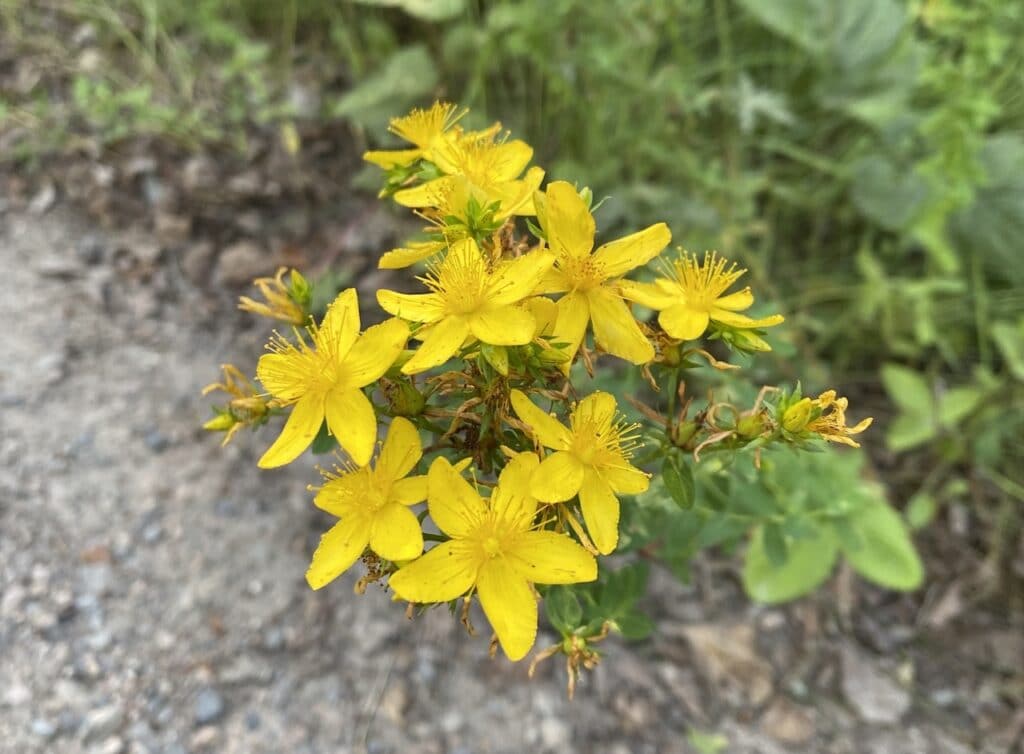
Hypericum perforatum is a perennial, rhizomatous herb that can reach 4 ft. (1.2 m) in height.
Common St. Johnswort has been used to treat mild depression but has been shown to cause hyper photosensitivity. Plants inhabit rangelands, pastures, roadsides, and forest clearings. St Johnswort is native to Europe. Hypericum perforatum may be poisonous to cattle in large doses. (Source: EDDMapS)
6. Hawkweeds
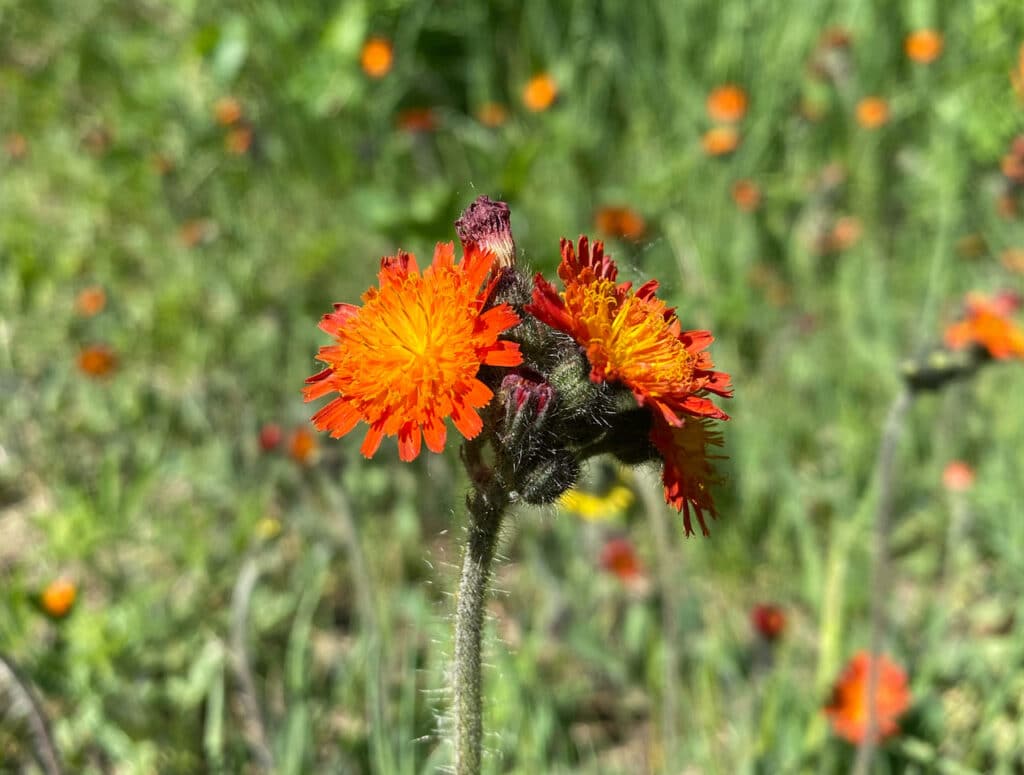
Orange hawkweed (Hieracium aurantiacum) is a perennial herbaceous plant, 10–24 inches high. Produces a milky sap.
Orange hawkweed is found in northern moist pastures, forest openings, abandoned fields, clearcuts and roadsides. Hawkweeds colonize and can rapidly dominate a site. It is an early successional plant and appears in large numbers on newly disturbed sites. The plants form solid mats of rosettes, causing loss of native plant diversity. (Source: UMN Extension)
Note: Recent taxonomic changes have split orange hawkweed from other hawkweeds, they are used interchangeably here for clarity.
7. Oxeye Daisy
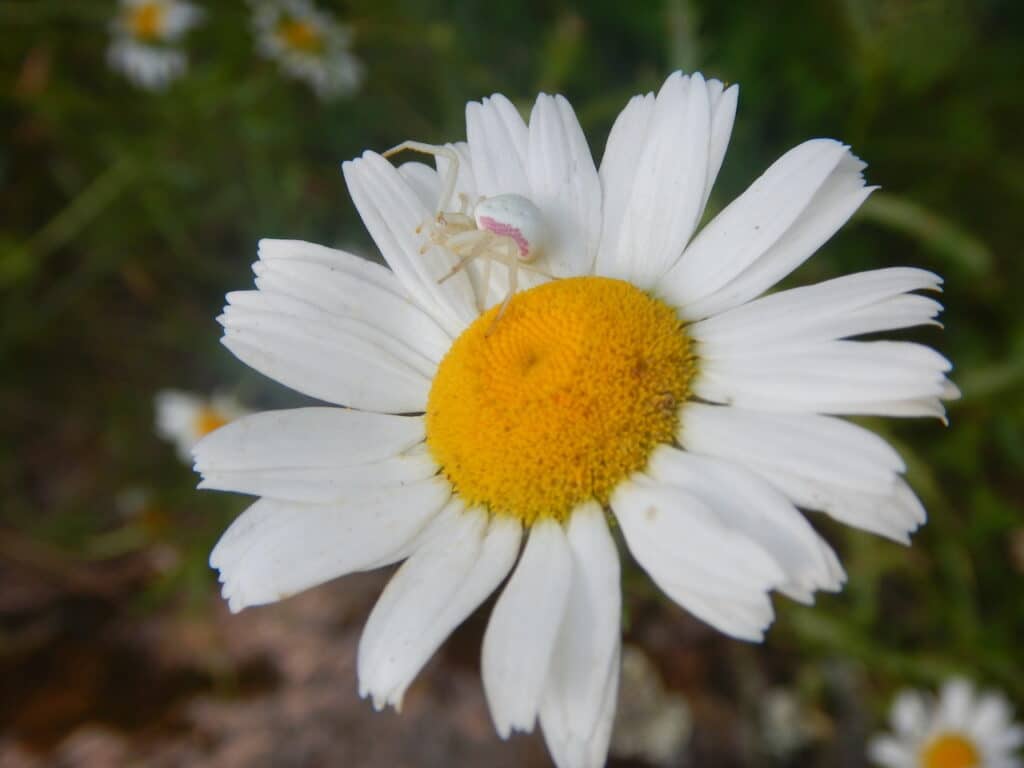
Oxeye daisy is a perennial weed. It is considered an aggressive invader due to its shallow, creeping roots. Seeds are usually distributed by wind and the seeds can remain viable for 2 to 3 years. Oxeye daisy grows in all habitats, especially in nutrient poor soils.
Oxeye daisy grows rapidly which can lead to the displacement of native vegetation. The shallow, creeping root system can cause some competition with native species. (Source: EDDMapS)
8. Reed Canarygrass
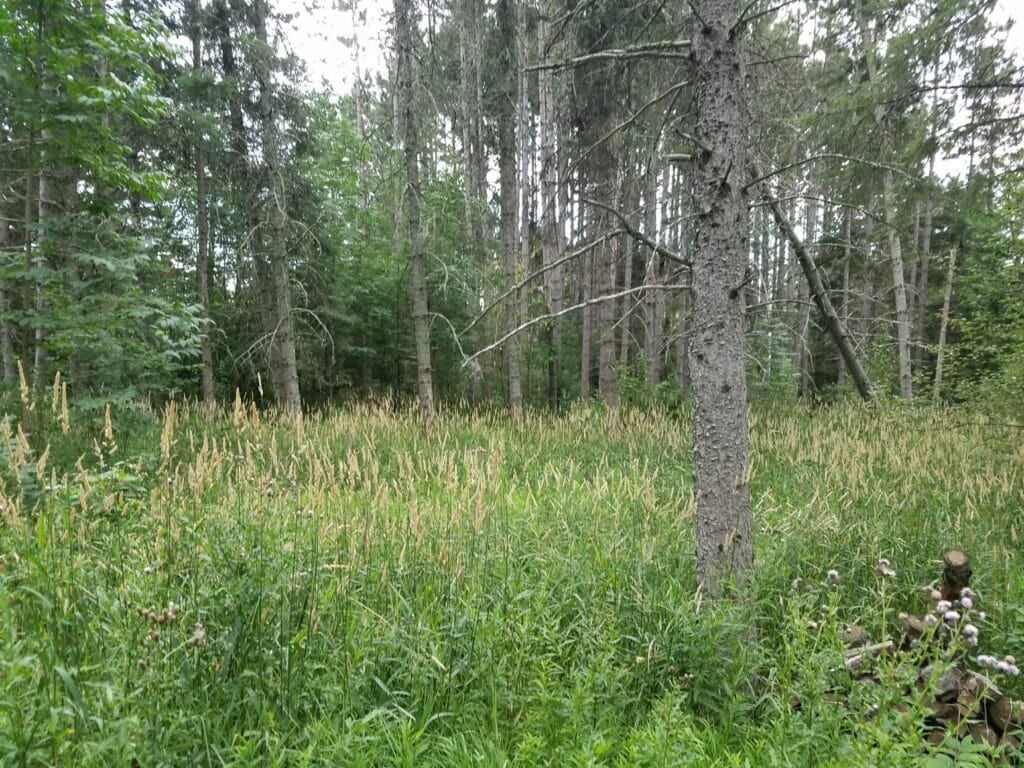
Reed canary grass (Phalaris arundinacea) is a perennial cool season grass that grows two to six feet high. Prefers moist soils such as ditches, stream banks and wetlands, but can also grow in upland areas.
Reed canary grass can out-compete many native species and can present challenges to wetland management and restoration. It is capable of forming large stands that will produce a second growth spurt in the fall if cut during the growing season. (Source: UMN Extension)
9. Birdsfoot Trefoil
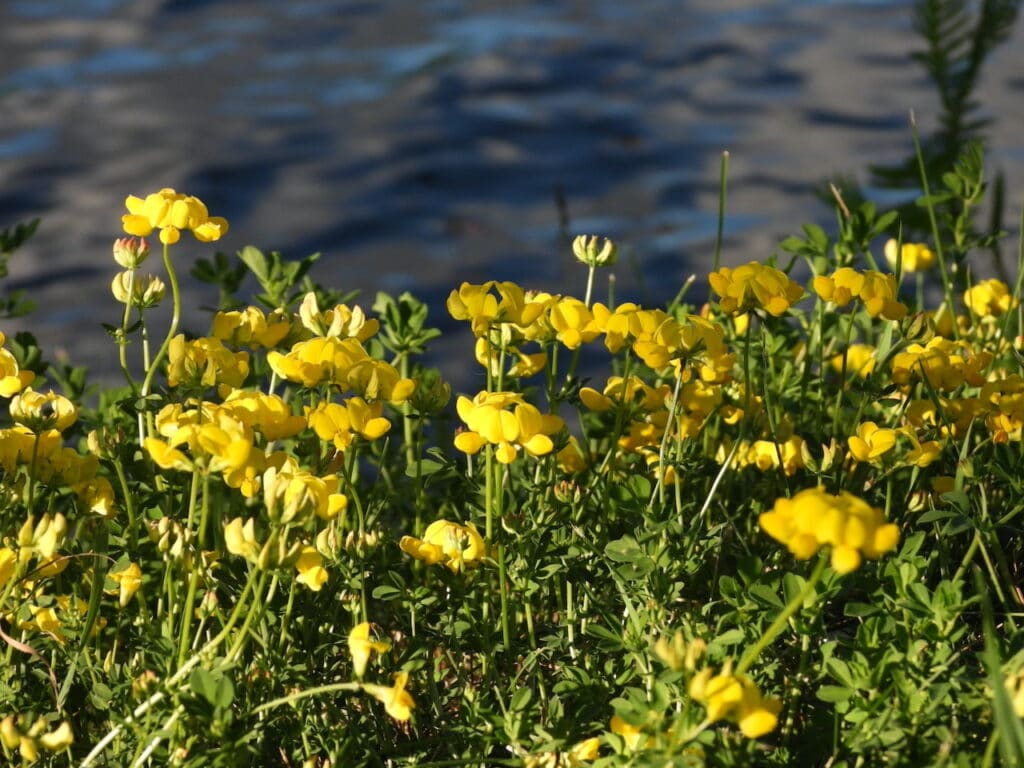
Birdsfoot trefoil (Lotus corniculatus) is a perennial herbaceous forb, 12–24 inches tall. The clover-like plant has a sprawling growth pattern. It can reach up to 2 feet long. Yellow, pea-like, 1/2-inch-long flowers, typically in flat-topped clusters of 2–12, sometimes tinged with red. Blooms most of the summer.
Birdsfoot trefoil is found in prairies and open areas, such as roadsides. It forms dense mats, choking and shading out most other vegetation. Prescribed burns increase germination, making it troublesome in native prairies. (Source: UMN Extension)
10. Purple Loosestrife
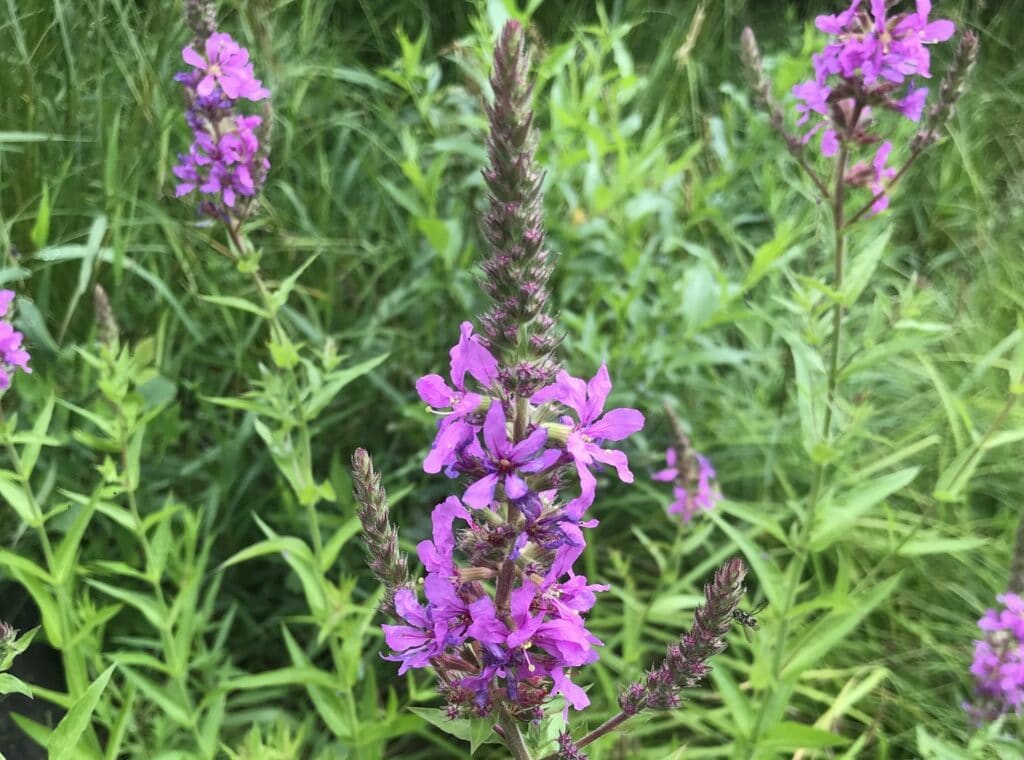
Lythrum salicaria is a tall, multistemmed (30-50 per plant), perennial forb that can grow up to 10 ft. (3 m) in height.
Purple loosestrife is a serious invader of many types of wetlands, including wet meadows, prairie potholes, river and stream banks, lakeshores, tidal and nontidal marshes, and ditches. It can quickly form dense stands that completely dominate the area excluding native vegetation. This plant can spread very rapidly due to its prolific seed production; each plant can produce up to 2.5 million seeds per year. It can also hybridize with native loosestrife species, potentially depleting the native species gene pool. (Source: EDDMapS)

